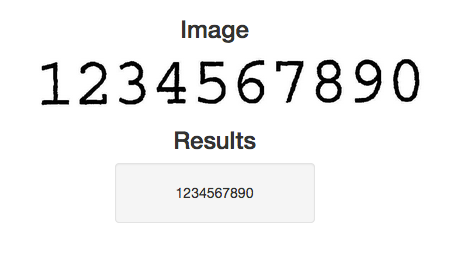Don’t waste time or make mistakes entering information on tickets, license plates, order forms, delivery notes, ID cards or badges: use OCR on your Android smartphone!
Formats can range from cash register receipts to formats to be defined according to the fonts and camera definition of the chosen device. Printouts can mix characters and barcodes: everything will be scanned and recognized with new learning technologies.
New OCR function on our mobile apps (option):
What is “OCR “? Optical Recognition of Caracters: in short, the camera reads and stores numbers and letters directly in the app, saving you the time of typing them by hand on the smartphone screen.
We can decrypt characters and barcodes in a single shot, across an entire document. We’d like to share these results with you through a test OCR application.
Mobile OCR markets and applications:
- Police, homeland security: fast Rapid reading of car license plates,
- Security passport reading, vehicle registration
- Linking of management data between systems (ERP, WMS) between systems (ERP, WMS): additional entries on a customer order, such as picking/order preparation, time management, supplier order reception, etc.
- Trade shows: fast badge reading without code barcode-free badge reading,
- Trade, Ticket/Invoice extraction of accounting information from payment receipts, starting from receipt format,
- Banking: RIB/IBAN: don’t waste any more time entering RIB information, or verifying the identity of the account owner, OCR automatically extracts all this information.
Test OCR on your Android cell phone
We’ve developed a real-world application that includes stantard OCR reading for Android. The application takes a photo, analyzes the characters in the photo and displays the content back to you, all in just one second.
The principles and possibilities of single-field and multi-field OCR on smartphones
The question to answer is: can we read characters, and if so, under what conditions, at what speed, and what are the limits of integration into our custom software or application generators on smartphones/hardened terminals?
In short: yes, you can read and decode characters on a smartphone or ruggedized Android mobile terminal.
The aim here is to tell you what you can and can’t do.
Simple case: reading a pattern of characters.
Example : read 8 characters on 1 line, or read 4 numbers on the 1st line and 8 on the second, and barcodes (1D and 2D) Condition : initially in 2018, the font of the printed characters had to be OCR-A or OCR-B, numbers or letters, now in 2023, there is no condition.
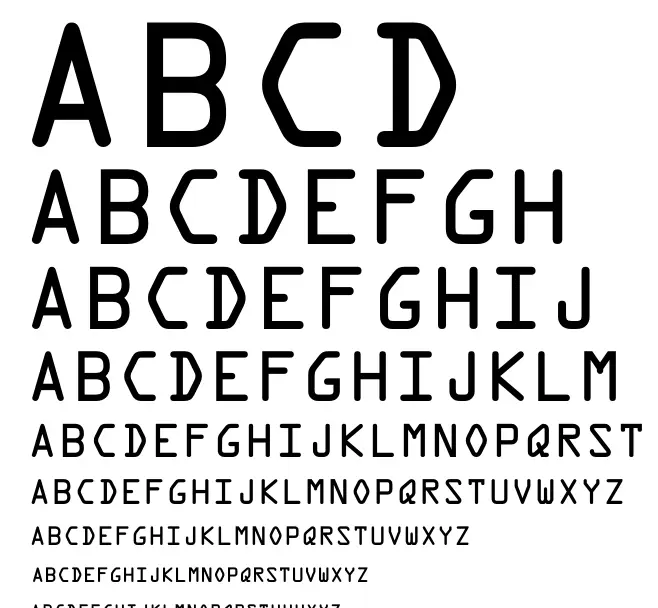
OCR-A alphanumeric font scannable by terminals
The answer: we can read these standardized characters without a special license on a range of our mobile terminals, after setting the parameters and using the imager’s “wedge” mode in our programs. Reading speed: fast, maximum distance: approx. 20cm, made by an imager. In 2023, smartphone cameras will be able to read non-standardized and standardized characters at approx. 10cm, depending on the terminal’s optics.
This means that applications can be created in close proximity, on printed characters, on sheets or labels. We can therefore say that the following types of mobile application can be used to capture these types of data: NB: none of the French identity documents use OCR-A or B.
Complex case: reading a form according to a template.
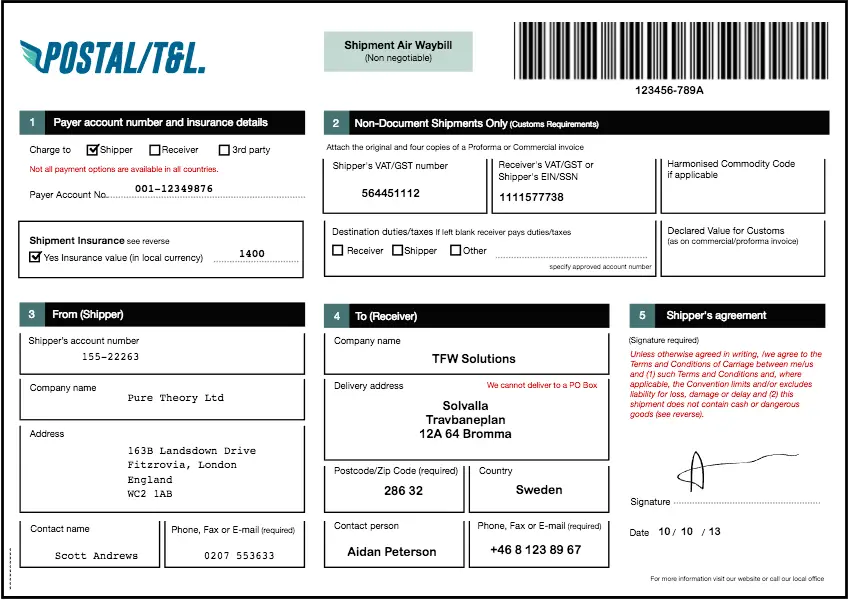
Complex form of OCR reading characters, addresses, codes, checkboxes read by cell phone
The aim is to read several typed fields or checkboxes, and store a signature on a pre-printed form supplied.
A range of terminals offers a manufacturer’s license to define form templates in which fields are defined to be captured, decoded (checkbox, typed field) or stored as an image. (signature). Another solution is to use the camera on a smartphone, without adding a manufacturer’s license.
This is done slowly (centered in the lens of the A4 form), by the camera. The license recognizes the model and decodes according to the instructions, proposing decoding to the user, who corrects manually. The data is then sent to the calling application.
Intermediate case: reading several barcodes on a label (e.g. Galia) (and without OCR). (and without OCR)
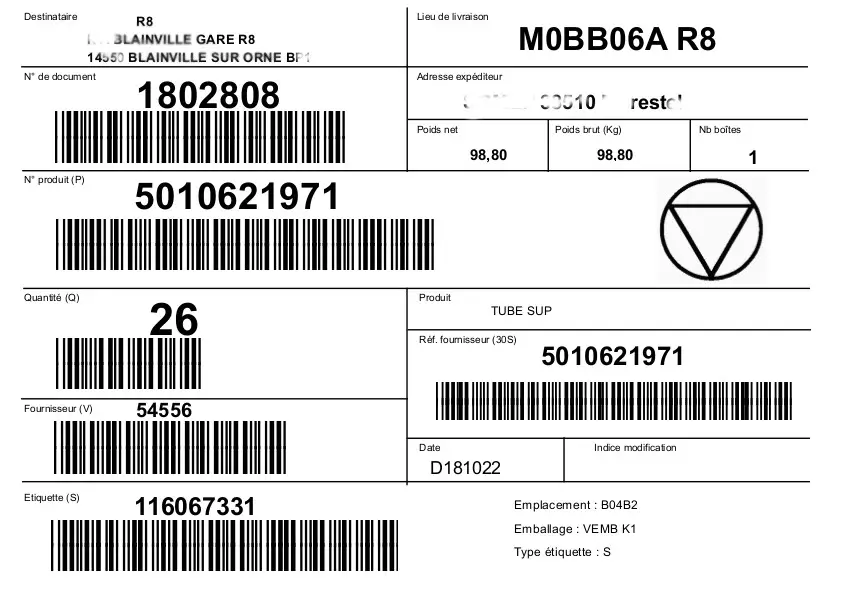
Galia multi barcode label
Our three terminal ranges can do this, but in different ways. One involves continuous reading of the label by the imager, with the codes having to have a distinctive format such as a different letter at the start of the code.
The other is a single scan with a manufacturer’s license and predefined model, as above, but by the imager (very fast).
Lastly, on a smartphone, using drivers developed in-house based on machine learning: virtually all barcode fonts are recognized, and codes must have a distinctive format such as a different letter at the beginning of the code in order to be read with a single click.
Android barcode scanner and character recognition demo app
Our demo app enables barcode reading and optical character recognition (OCR) at the same time:
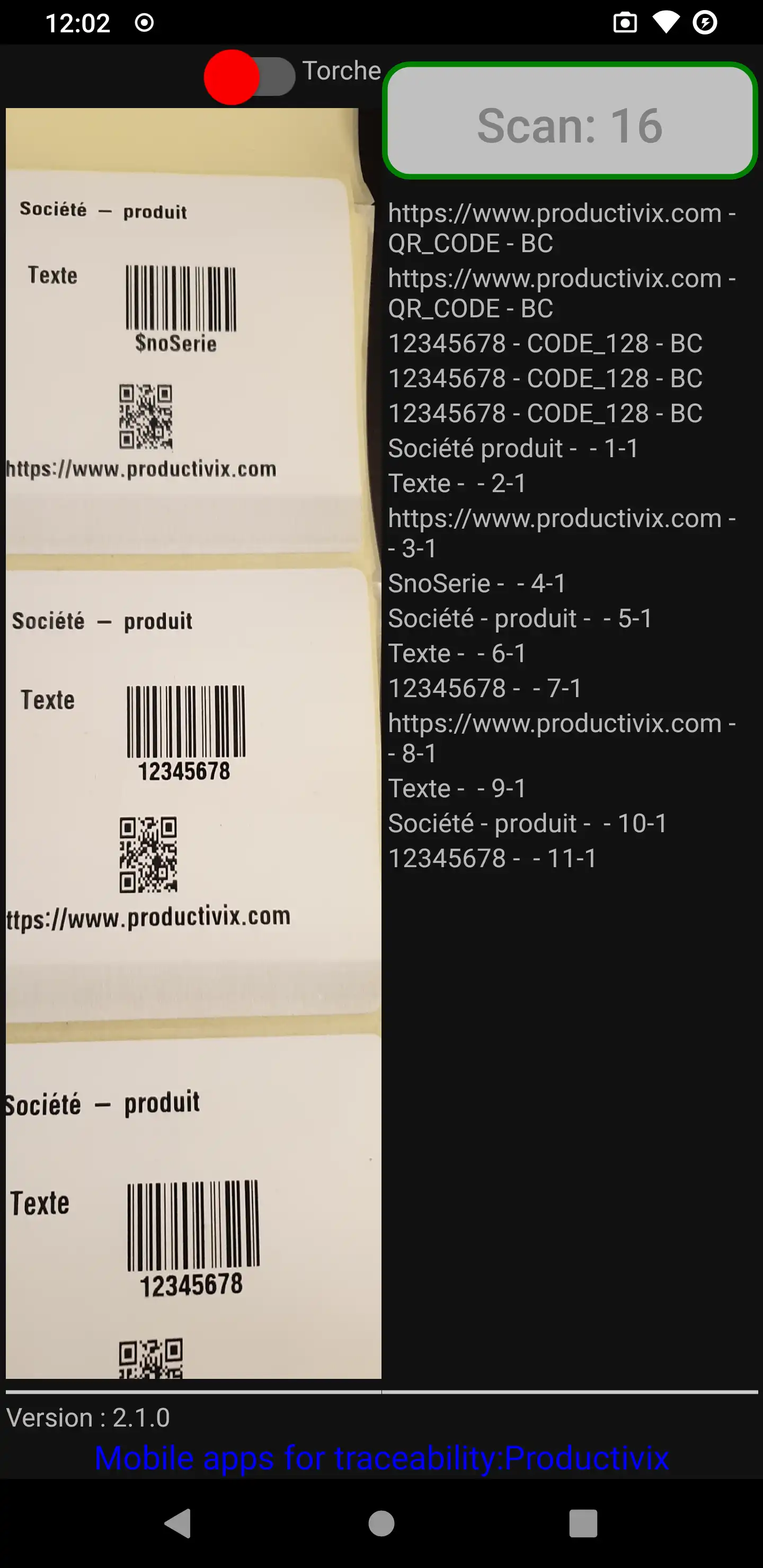
Screenshot of our barcode reading and OCR camera test app
Conclusion on complex readings by character recognition:
Libraries evolve regularly, and we integrate the latest updates. Our technical teams are constantly looking for the simplest ways to enable you to read complex cases automatically, quickly and cost-effectively.
Do you have a similar need? Don’t hesitate to tell us what you need: a copy of a pencil drawing of an interface, examples of interface files, or a video of an obsolete software program in action will suffice.
